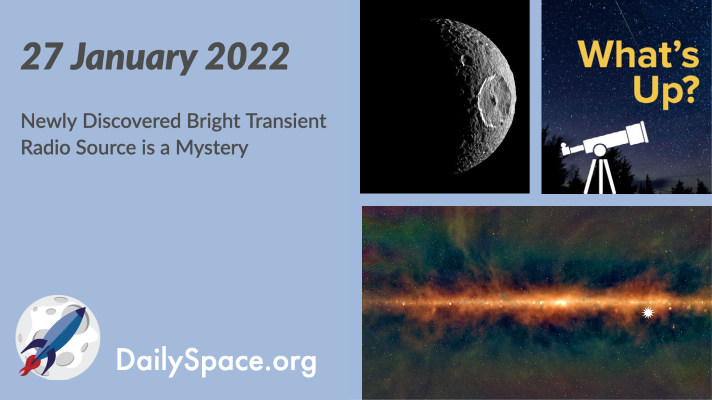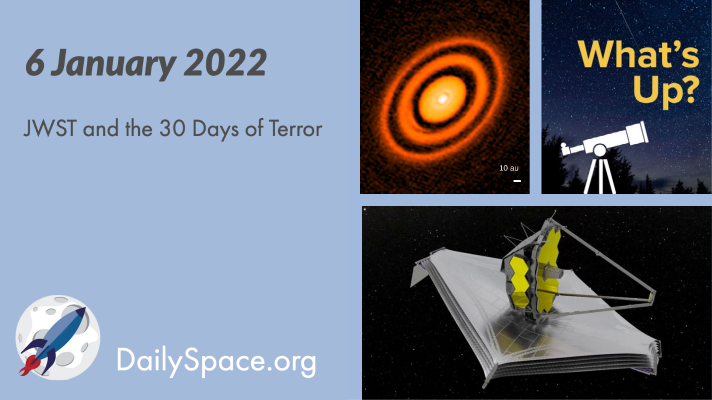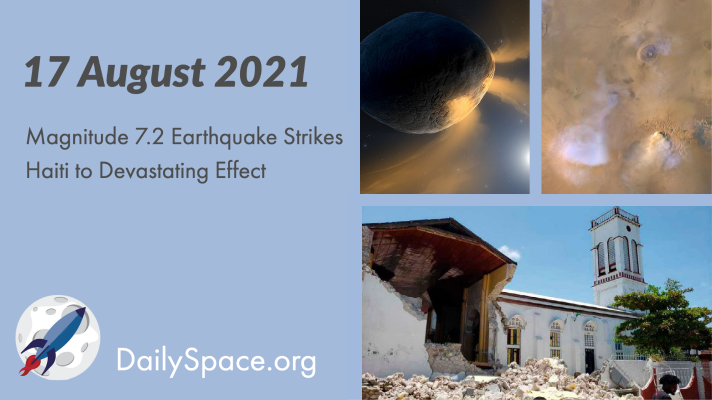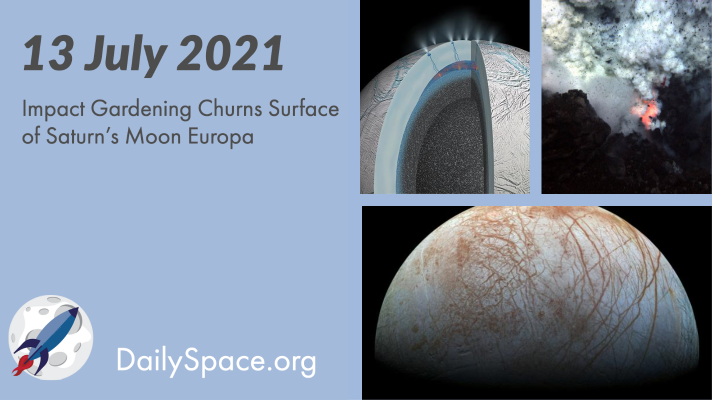
Jan 28, 2022 | Daily Space, Earth, Mars, Neutron Stars / Pulsars, Observatories, Our Solar System, Saturn, Science, Sky Watching, The Sun
Scientists using the Murchison Widefield Array in Australia recently discovered an extremely bright source of radio waves, releasing bursts of energy three times an hour. That timing makes the object behave unlike anything else seen to date, leaving the research team with a new mystery to unravel. Plus, everything else is about water today, all over the solar system, and we present this week’s What’s Up segment.

Jan 7, 2022 | Cassini, Daily Space, Earth, Globular Cluster, JWST, Our Solar System, Physics, Saturn, Sky Watching, Stars, Supernovae
With the successful launch of the JWST, the focus turns to the complicated process of unfurling the sunshield and unfolding the mirror. We’ll look at just where NASA is in the process and how much farther we have to go before first light. Plus, Earth and supernovae, and in this week’s What’s Up, we look forward to 2022’s astronomy events.

Oct 27, 2021 | Daily Space, Exoplanets, Galaxies, Guest Interview, Observatories, Saturn, Spacecraft, Supernovae
A proposed mission called the Contemporaneous LEnsing Parallax and Autonomous TRansient Assay, or CLEoPATRA, seeks to work with the Nancy Grace Roman Telescope to find rogue planets not orbiting any star. Meanwhile, a possible planet has been discovered in the Whirlpool Galaxy and could be the first planet found outside the Milky Way. Plus, an interview with Dr. Margaret Meixner, Director of Science Mission Operations for the SOFIA telescope.

Aug 18, 2021 | Asteroids, Daily Space, Earth, Mars, Saturn, Star Forming Region
A magnitude 7.2 earthquake shook the island nation of Haiti, destroying thousands of homes and resulting in the loss of over 1,400 people. Additionally, Tropical Depression Grace arrived and hampered rescue efforts. Plus, the asteroid Phaethon is outgassing sodium, studying Mars’ moons in the search for life, and how dust storms helped dry out Mars.

Jul 14, 2021 | Blue Origin, Crewed Space, Daily Space, Earth, Jupiter, Our Solar System, Saturn, Space China, Spacecraft, Virgin Orbit
Over tens of millions of years, the surface of Europa has been churned by impacts down to an average depth of 30 centimeters. This churning means that the search for chemical biosignatures must look below that zone. Plus, methane and icequakes at Enceladus, predicting underwater eruptions, Virgin Galactic’s flight, and a Chinese spacewalk.

May 28, 2021 | Asteroids, Daily Space, Earth, Exoplanets, JAXA, Jupiter, Mars, Mercury, Saturn, Sky Watching, The Sun, Venus
Jupiter’s moon Europa, an icy world with a subsurface ocean that interests astrobiologists, may actually be hot enough to melt the interior rock and create volcanoes on the ocean floor. Plus, Ryugu, giant planets, fossil discoveries, Martian glaciers, and this week’s What’s Up!








 We record most shows live, on Twitch. Follow us today to get alerts when we go live.
We record most shows live, on Twitch. Follow us today to get alerts when we go live.